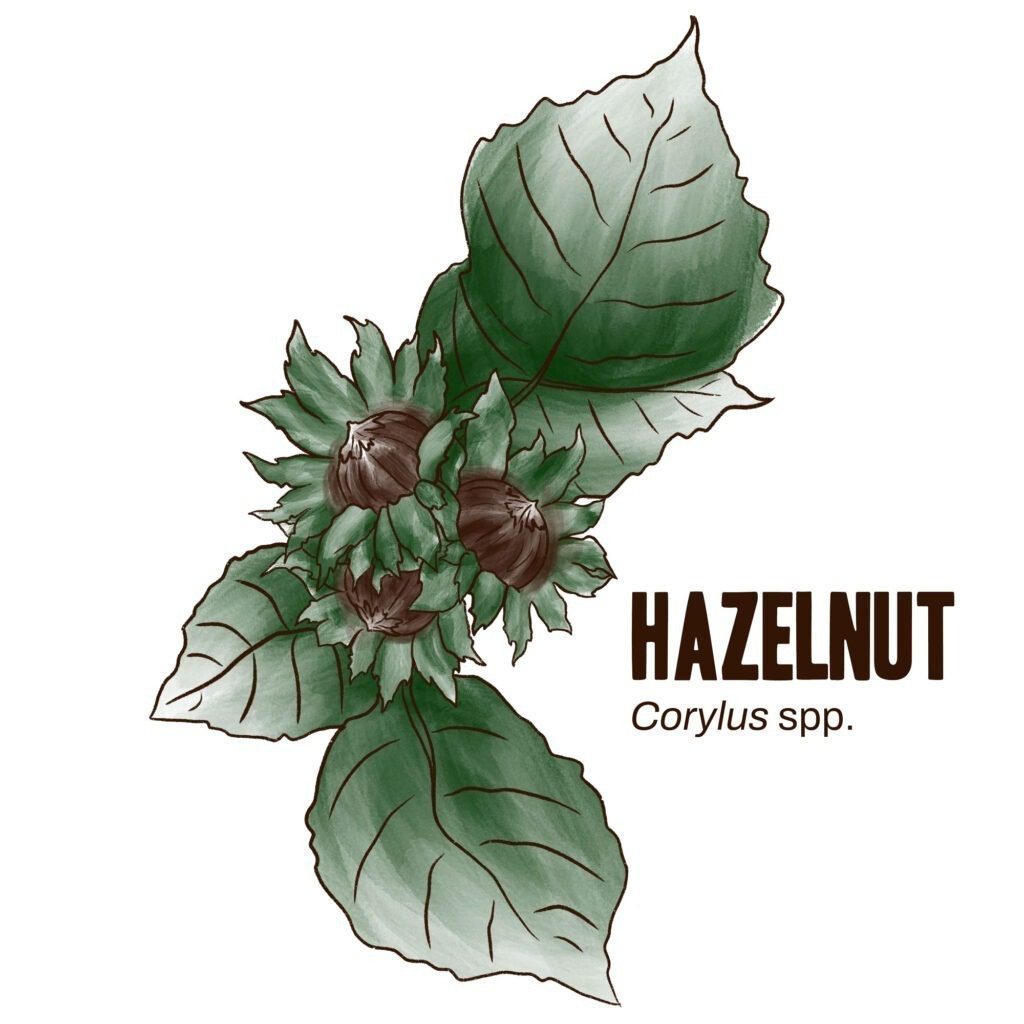
Hazelnut
Corylus spp.
A promising, low-input perennial source of food, oil, and livestock feed. Hazelnuts represent a $7 billion global market set to double in the next decade. Hazelnuts can be hand or machine harvested.
DRAINAGE: Well-drained soils
LIGHT: Full sun
ZONES: 3–8
SPACING: 6-12 ft in-row
YEARS TO PARTIAL/FULL BEARING: 3-5
HARVEST SEASON: September–October
Opportunities
Hazelnuts grow on a perennial shrub that mature relatively quickly for a nut crop. Researchers and farmers have been developing hazelnut plant material and cropping systems for the Eastern United States over the last several decades. Improved hybrid hazelnut cultivars have recently become available.
Challenges
The main environmental challenges in these regions are cold winters and Eastern Filbert Blight, a fungal disease that affects the European hazelnut (Corylus avellana) but not the American hazelnut (C. americana). For this reason, American hazelnut selections have been used as a source of disease resistance, as well as cold tolerance, in hybrid crosses with commercial European varieties.
Management
Hazelnuts are self-incompatible, and therefore selection of pollinators is variety specific. For this reason, care must be taken to design orchard layouts that involve inter planting of compatible varieties or seedling populations. Prune to 1-3 trunks (more trunks lead to earlier nut production). After the first or second year, pruning is needed.
Our Research
The team has planted thousands of hybrid hazelnut seedlings on research acreage at Savanna Institute’s Campus in Spring Green, WI. Unique in terms of its design and genetics, this planting will facilitate successful evaluation of yield density (using drone imagery) and machine-harvest ability (using custom-designed single plant combines).
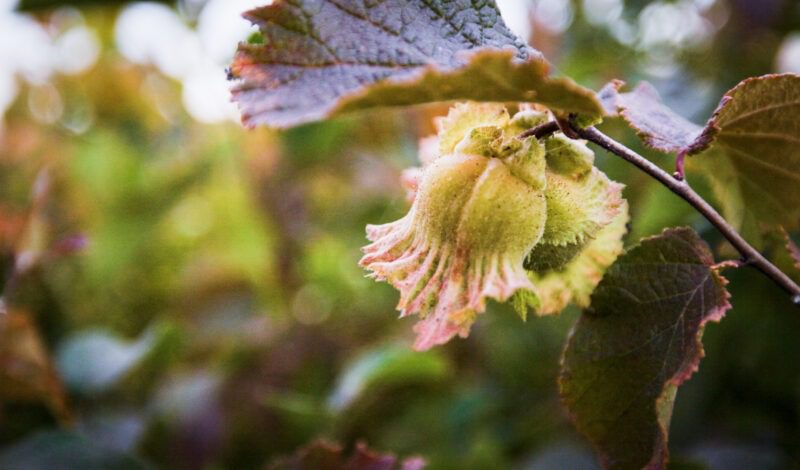
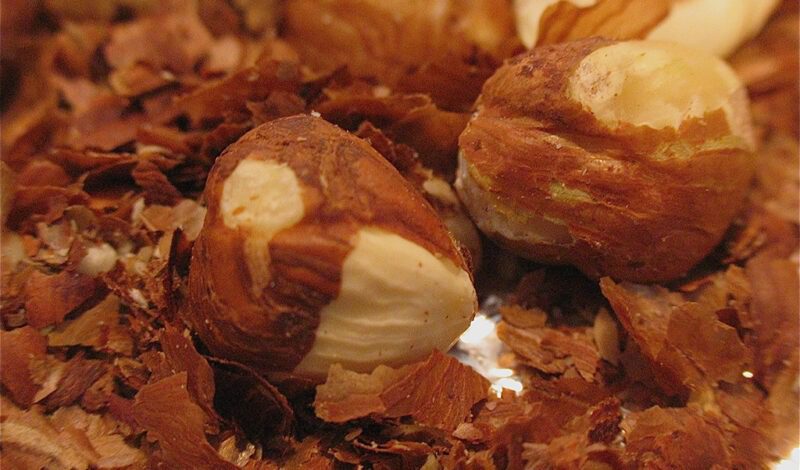

RESOURCE
Overcoming Bottlenecks in the Midwest Hazelnut Industry
The hazelnut market is set to double in the next ten years. We’ve talked with experts across the value chain to find out what the top ten bottlenecks for the Midwest Hazelnut industry are and how to overcome them. Download this free report to learn more and get involved.
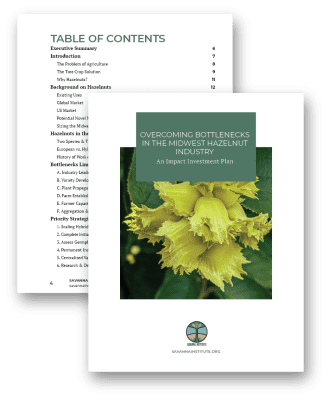

Hybrid Hazelnuts in the Midwest
The Midwest hazelnut market is well-positioned to expand dramatically as the global demand increases.

One-On-One Support for Farm Planning
Technical Assistance Program
Get help planning your perennial farm system. Our Technical Assistance Program is here to guide you through the process of planning, funding, and planting trees on your farm.
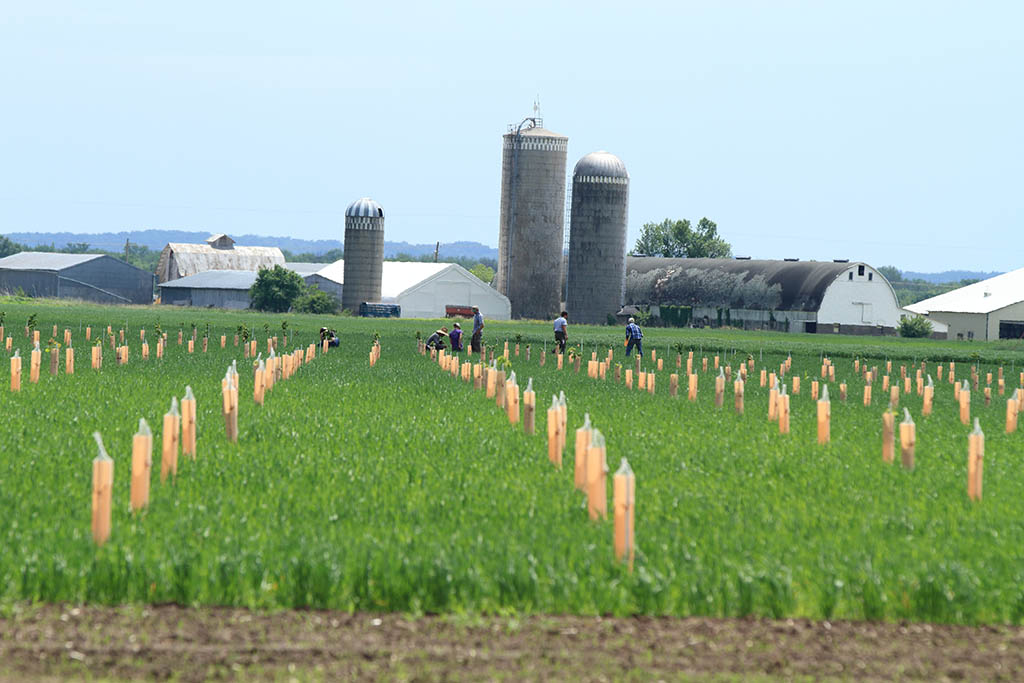
Looking For Plants?
Canopy’s Nursery offers plant material in your region. Find chestnut, walnut, pecan, hazelnut, heartnut, persimmon, pawpaw, black currant, and elderberry for order in their online store. Not only does Canopy increase the availability of high-quality plant material in the region, it also donates part of its proceeds to Savanna Institute’s nonprofit research and education mission.

